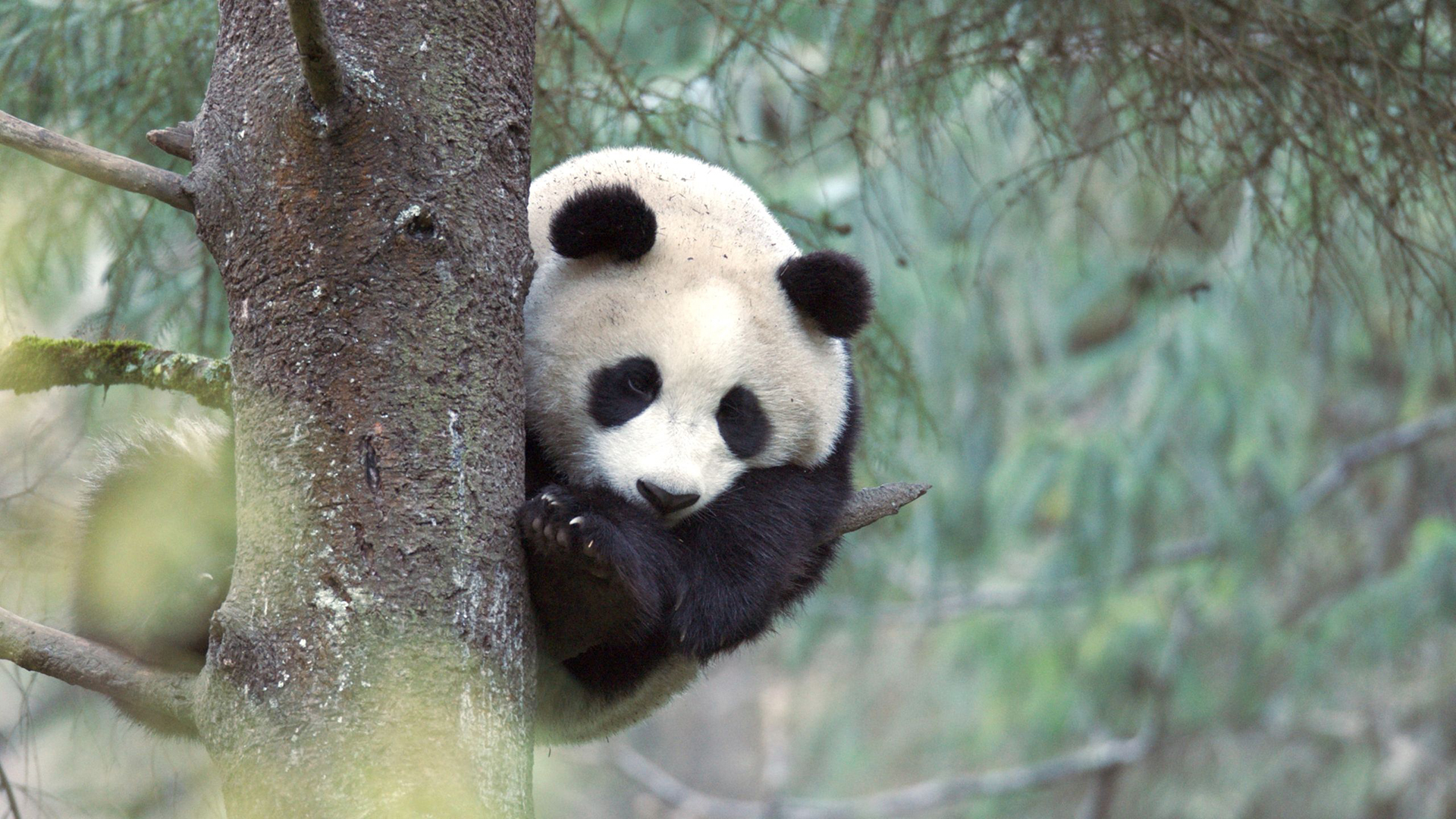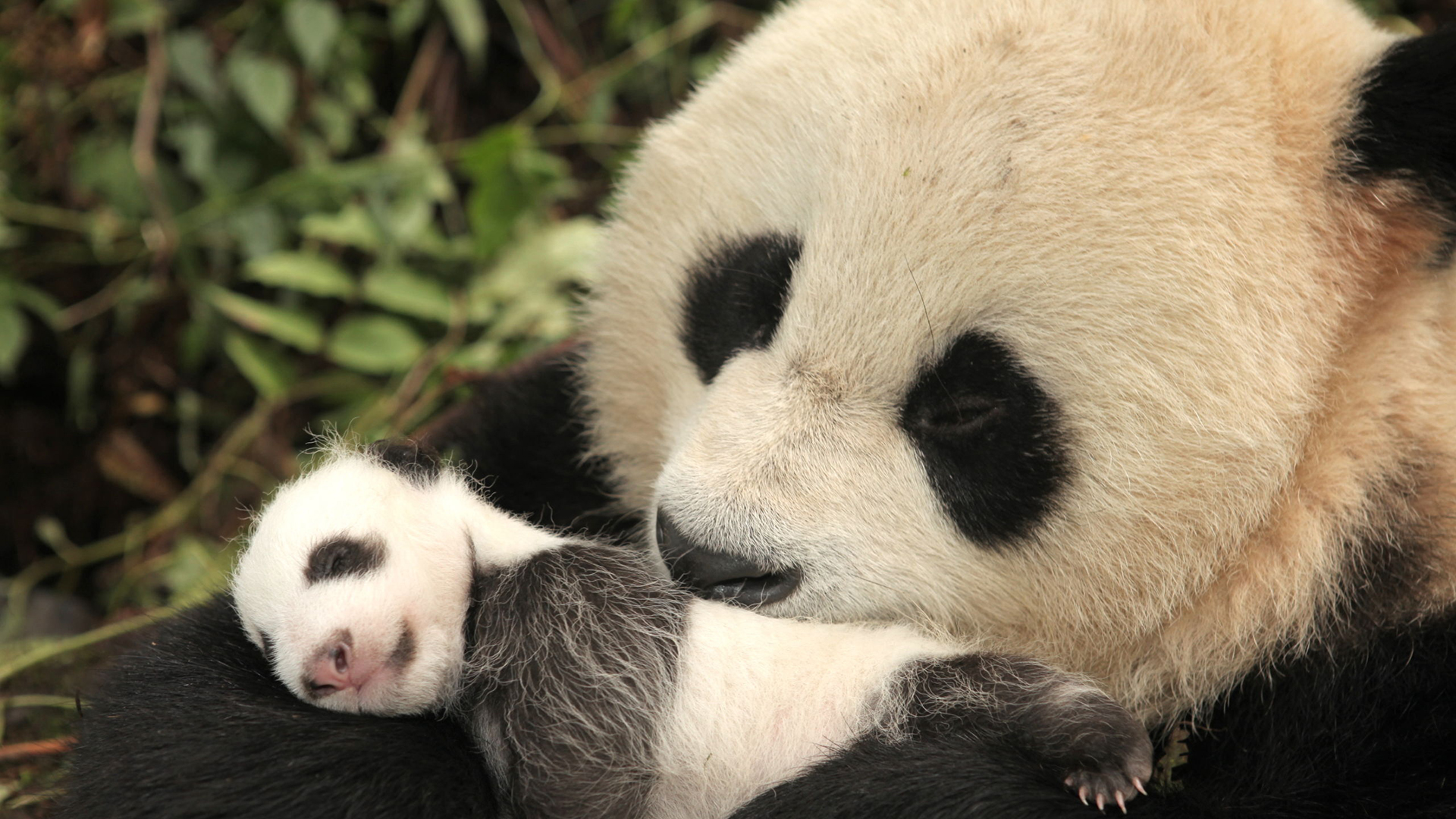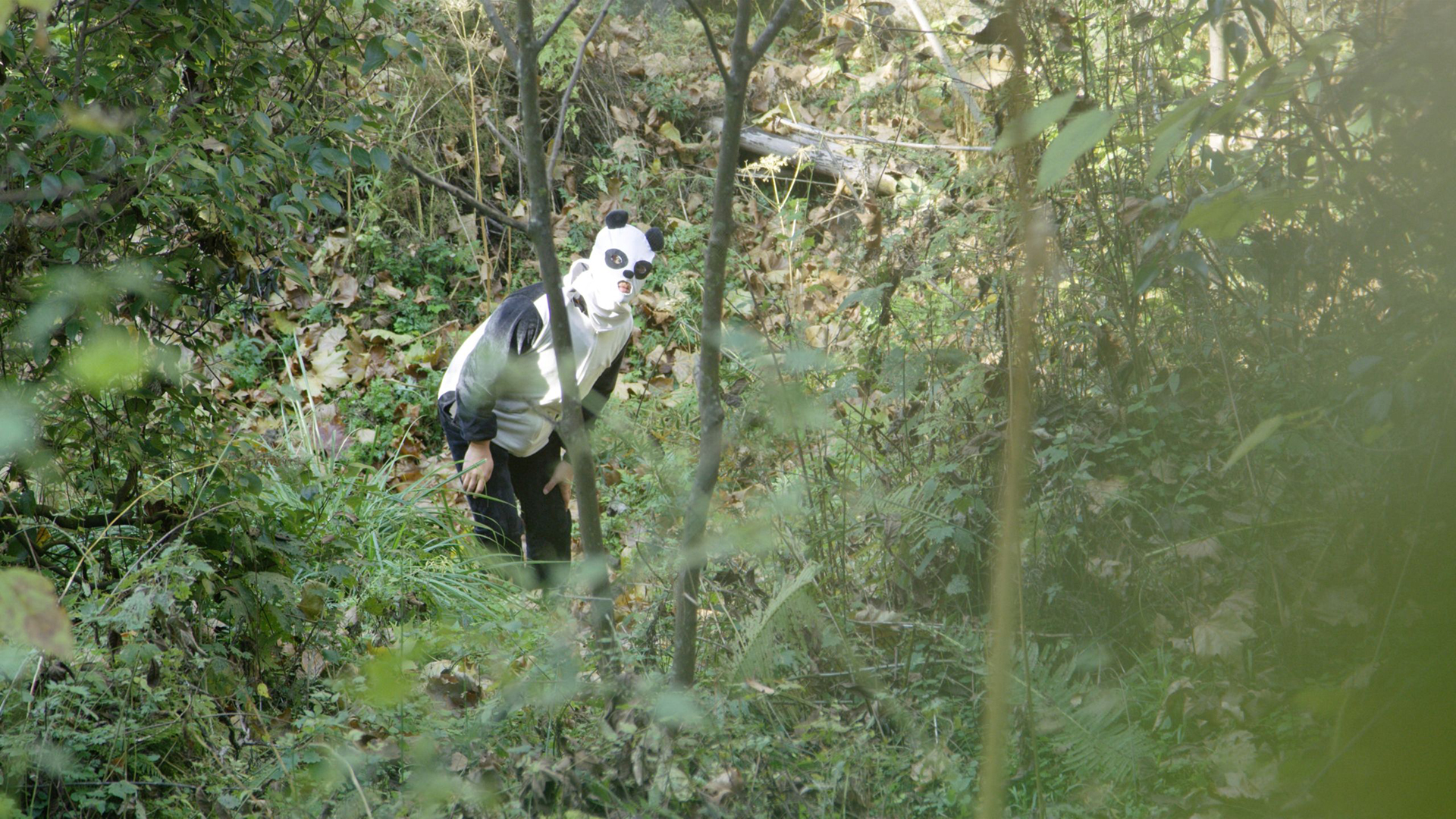1st-ever footage of giant pandas mating in the wild is not 'cute and cuddly'
Filmmakers spent three years following and filming pandas in China's Qinling Mountains

A pair of aggressive male giant pandas roar ferociously on the ground beneath a female perched in a tree, in the first-ever footage of panda courtship and mating in the wild.
For nearly three years, nature filmmakers Yuanqi Wu and Jacky Poon followed pandas in China's Qinling Mountains, hoping to capture evidence of elusive behavior that was unseen in captive animals, which are mated under controlled conditions that do not include competitions between males.
Their patience paid off during breeding season, when they spied two bristling males squaring off at the foot of a tree, with a fertile female in the branches above. This and other remarkable scenes of panda life — including a young cub learning critical survival skills — are part of the new PBS Nature documentary "Pandas: Born to be Wild," premiering Wednesday (Oct. 21).
Related: In photos: The life of a giant panda
Pandas (Ailuropoda melanoleuca) are popular for their comically round body shape and adorable antics, and videos of captive pandas playing in snow; rolling around like giant balls; using their heads to climb; or even accidentally face-planting, are undeniably enchanting. But when these bears are seen in their natural habitat, "there's nothing cute and cuddly about them," Jacky Poon, "Born to be Wild" filmmaker, said in the documentary.
Adult male pandas can weigh as much as 300 lbs. (136 kilograms) and are nearly 7 feet (2 meters) tall when standing upright on their hind legs, according to the World Wildlife Fund. Pandas are highly territorial, and males usually interact with females only during mating season between March and May, WWF says.
In the tense standoff between the dominant, older male panda and an eager rival, the younger male eventually retreated, but when the female came down from her perch, she fought with the victor and escaped. For weeks, the two males trailed her, their growling challenges becoming more frequent and culminating in another tense confrontation. But a week later, when the female was finally ready to mate, just one suitor remained — the younger male.
Sign up for the Live Science daily newsletter now
Get the world’s most fascinating discoveries delivered straight to your inbox.
Male pandas' bellowing, scent marking and female "hostage"-holding are mating behaviors that may trigger ovulation in female pandas. That could explain why pandas are so difficult to breed in captivity, in the absence of this male competition.

Another star of "Born to be Wild" is a young male cub born through artificial insemination at the Wolong Panda Center and raised there in a special enclosure. Most of the reserve's cubs grow up around other pandas and human caretakers, and so they are more social than is typical for wild, solitary bears. However, to prepare this young panda for life in the wild as an adult, the caretakers will keep him for three years only with his mother, separated from other pandas and with very limited interaction with people.
But caretakers still need to regularly check the cub's health and development; to do that, they dress in panda suits, and they further disguise their human scent by dousing themselves with panda urine. Though these costumes may not seem terribly realistic, they are close enough to the real thing to fool a young panda; vision in these youngsters is known to be very poor, PBS Nature representatives said in a statement.

"Nature — Pandas: Born to be Wild" airs Oct. 21 at 8 p.m. (check local listings), pbs.org/nature and the PBS Video app
Originally published on Live Science.

Mindy Weisberger is an editor at Scholastic and a former Live Science channel editor and senior writer. She has reported on general science, covering climate change, paleontology, biology and space. Mindy studied film at Columbia University; prior to Live Science she produced, wrote and directed media for the American Museum of Natural History in New York City. Her videos about dinosaurs, astrophysics, biodiversity and evolution appear in museums and science centers worldwide, earning awards such as the CINE Golden Eagle and the Communicator Award of Excellence. Her writing has also appeared in Scientific American, The Washington Post and How It Works Magazine. Her book "Rise of the Zombie Bugs: The Surprising Science of Parasitic Mind Control" will be published in spring 2025 by Johns Hopkins University Press.










